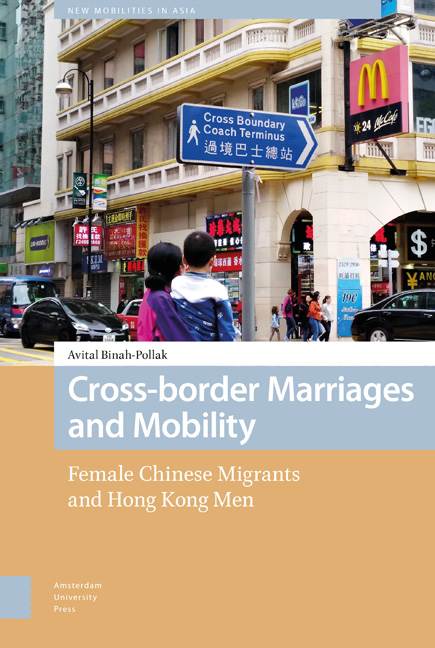Book contents
- Frontmatter
- Contents
- List of Figures and Tables
- Acknowledgments
- Introduction
- 1 The Hong Kong-China Border: A Space of Confinement and Movement
- 2 Motivations for Crossing Borders
- 3 ‘Same as Before, Living as a House Wife’
- 4 Hong Kong's Education: A Bridge to the ‘First World’
- 5 New Voices in Hong Kong: Local Identity Formation
- Concluding Thoughts: Home Is not where the Heart Is but where it Wants to Be
- Bibliography
- Index
- Frontmatter
- Contents
- List of Figures and Tables
- Acknowledgments
- Introduction
- 1 The Hong Kong-China Border: A Space of Confinement and Movement
- 2 Motivations for Crossing Borders
- 3 ‘Same as Before, Living as a House Wife’
- 4 Hong Kong's Education: A Bridge to the ‘First World’
- 5 New Voices in Hong Kong: Local Identity Formation
- Concluding Thoughts: Home Is not where the Heart Is but where it Wants to Be
- Bibliography
- Index
Summary
Between 2010 and 2011 I lived with my family in Sheung Shui, a town in the New Territories, Hong Kong, which is approximately a ten-minute train ride from Shenzhen, China. A short time after my five-year-old daughter began to attend a local kindergarten I discovered that most of the other children’s mothers were rural mainland Chinese women who had immigrated to Hong Kong after marrying local men. Almost every day, the marriage migrants I came to know in Sheung Shui met for a Cantonese breakfast after bringing their children to kindergarten or school. Following breakfast, they usually spent their mornings together until it was time to pick up the children from the kindergarten and return home. One day I was invited by Wang Jian, a mother from the kindergarten, to join the group for their daily breakfasts. Usually our meetings continued in the afternoons, and nearly three times each week we had dinner together at one of the mothers’ homes. The fathers were usually absent from these gatherings; most of them worked long hours and came home late, while others worked night shifts or were employed far from Sheung Shui and only returned home in the weekends.
Since Hong Kong's return to Chinese sovereignty, the social, political, and economic situation in Hong Kong has changed dramatically. The intensification of cross-border activities and growing political interference from China’s central government have resulted in a significant amount of discrimination against mainlanders in Hong Kong. As a result, mainlanders are often labelled as ‘outsiders’ and ‘intruders’ in Hong Kong (Yau, 2010). These views have been widely manifested in the media which tend to emphasize a range of negative aspects of mainland China and mainland Chinese immigrants, commuters, and tourists. On 1 February 2012, for example, an advertisement comparing mainland women who cross the border to give birth to locusts was published on the front page of the Pingguo bao (Apple Daily), a popular local newspaper in Hong Kong (Pingguo bao, 2012). That same week, a video of a loud argument between a local passenger and a mainland mother who was giving a snack to her child on the Hong Kong subway train was uploaded to YouTube, attracting more than one million views in only a few days.
- Type
- Chapter
- Information
- Cross-border Marriages and MobilityFemale Chinese Migrants and Hong Kong Men, pp. 11 - 34Publisher: Amsterdam University PressPrint publication year: 2019

